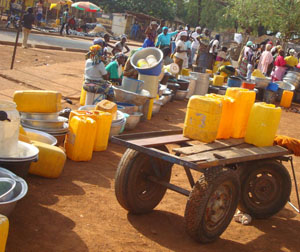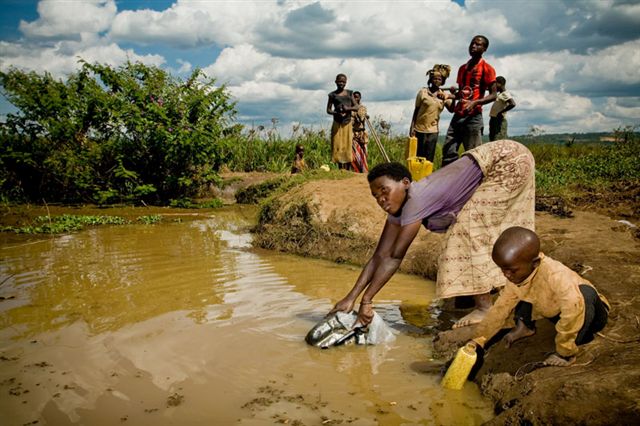It is no folktale the vital role water plays in our daily lives as individuals, families or corporate entities. But in spite of its necessity, inadequate access to clean water across various parts of Ghana remains an issue of dire concern.
A 2017 statistics by water.org has it that 3 million people in Ghana (about 11% of the country’s population) lack access to safe water. Perhaps one might not identify with the realities of those figures.
Let’s take Accra for instance: in places like Weija where the city or region’s primary water source is located, residents living around upper Weija often have to descend several kilometers to fetch water because of the highly irregular flow in taps around the vicinity (despite the location’s closeness to the Ghana Water Company Limited plant).
At a major public institution such as the Ghana Institute of Journalism (in the heart of Accra), water has to be supplied to feed the campus reserves every two weeks: thanks to the benevolence of the Ghana Fire Service.
For private residence in some parts of Airport residential, having a regular zero-access to tap water in a stretch of 10 – 14 days has become a normal experience. In the northern part of the country, there is a tendency for the problem to be excused but at Kumasi in the Central region, the tale of rural residents scrabbling for galamsey contaminated water is well known to the to the nation’s public.

However, it is worthy of note that quite an impressive work has been done in terms of ease of access to pay points for water bills: now just with a mobile phone and an MTN mobile money account, one could pay the GWCL utility bill. The new technology-based billing and payment system is barely a few months old.
As at now, the system has been effectively implemented in places such as Tema, Baatsonaa, Sakumono, Kpong, Akuse and its coverage is steadily being expanded to remote arears in the far East, West as well as the northern parts of the country. Soon enough, every single household in the Gold Coast nation will be on GWCL’s billing list although there is clearly not a corresponding tenacity in actually making the ‘goods’ available on demand.
The question however is, whose responsibility is it to solve the problem? Should ensuring national access to clean and safe water, or the protection of the conventional sources like the rivers & streams be relegated to international NGOs such as Safe Water Network? Isn’t it only curious that every 22nd March, Ghana and most of its other African counterparts celebrate the international water day by heralding stunning figures of an increasing population that lacks access this most basic of mankind’s daily necessities?
May be all we could say is that nobody can be neutral anymore: the youth who engages in illegal mining, another who is involved in water infrastructure theft, or the family that makes a local stream or river a safe dumping ground for its waste should stop thinking about themselves only but start making the community’s need for clean and safe water their consideration too. More so, a district, regional or national government as well as a private sector player in the sector should get back to the table and re-evaluate the level of importance it attaches to this critical problem and act accordingly.





